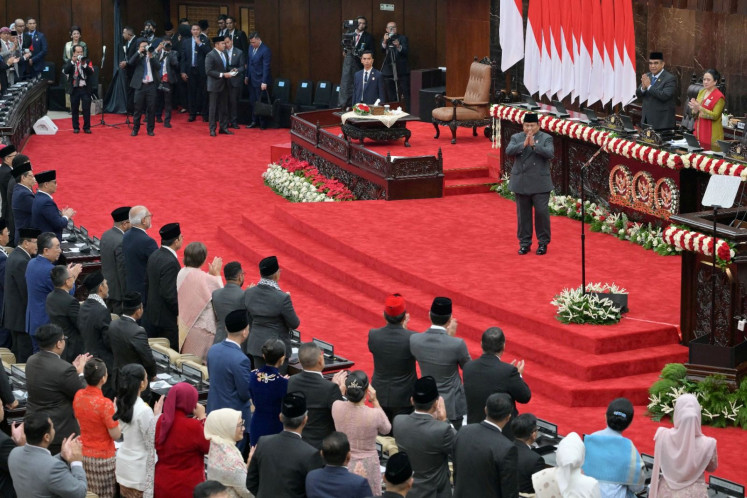Popular Reads
Top Results
Can't find what you're looking for?
View all search resultsPopular Reads
Top Results
Can't find what you're looking for?
View all search resultsIndonesia's defense overstretch dilemma
Transforming Indonesia's Defense Ministry into a "War Ministry" could refocus the TNI on combat readiness by delegating non-military tasks to civilians.
Change text size
Gift Premium Articles
to Anyone
O
n its 80th anniversary, the Indonesian Military (TNI) faces institutional overstretch. This weakens its core combat capabilities, a problem rooted in the nation's strategic culture shaped by historical legacies of militarism entangled with socio-political roles that has fostered a broad definition of defense, extending well beyond traditional military duties.
To address this, Indonesia can draw inspiration from the United States President Donald Trump's Sept. 5 executive order renaming the Department of Defense as the Department of War in a bid to emphasize its warrior ethos and streamline focus. Guided by US Defense Secretary Pete Hegseth's push to reduce bureaucratic excess and prioritize lethality, transforming Indonesia's Defense Ministry into a "War Ministry" could refocus the TNI on combat readiness by delegating non-military tasks to civilians.
At the heart of this overstretch lies Indonesia's strategic culture, a legacy of the New Order era's dual function doctrine that embedded the military in governance, the economy and society, cultivating a mindset where defense encompassed internal stability and development.
This cultural framework, once a source of national unity, now stretches resources thin as the Sishankamrata (total defense system) mandates the TNI's involvement in multiple non-conflict operations. Structurally, with defense spending at 0.8-1 percent of gross domestic product (GDP), below 2.5 percent global benchmarks, this culture hinders progress toward Optimum Essential Force (national defense program) goals, even as defense expansions continue. As a result, this cultural overstretch diminishes military operational readiness and fosters troops inefficiencies.
Addressing the financial constraints imposed by this strategic culture requires a new defense economic strategy. A hybrid defense spending model could synthesize the strengths of three major schools.
First, conservative neoclassical thought, which prioritizes deregulation and tax cuts to spur supply-side growth. Second, liberal neoclassical, which advocates regulated markets with social safety nets to balance efficiency and equity. Third, neo-Keynesian, which pushes demand-driven fiscal policies to counter economic downturns. This hybrid approach addresses the tensions in Indonesia's mixed economy, where fiscal conservatism often conflicts with the need for robust defense investments amid geopolitical pressures.
Integrating these with the Modern Monetary Theory (MMT), which asserts that Indonesia, as a sovereign currency issuer, can finance priorities without tax hikes or borrowing limits by managing inflation through resource allocation, creates a powerful framework. The Keynesian element supports deficit spending to boost demand and jobs, ideal for upgrading TNI's weapons systems, while MMT's flexibility allows budget reallocation to active combat, treating defense as an economic multiplier.



















